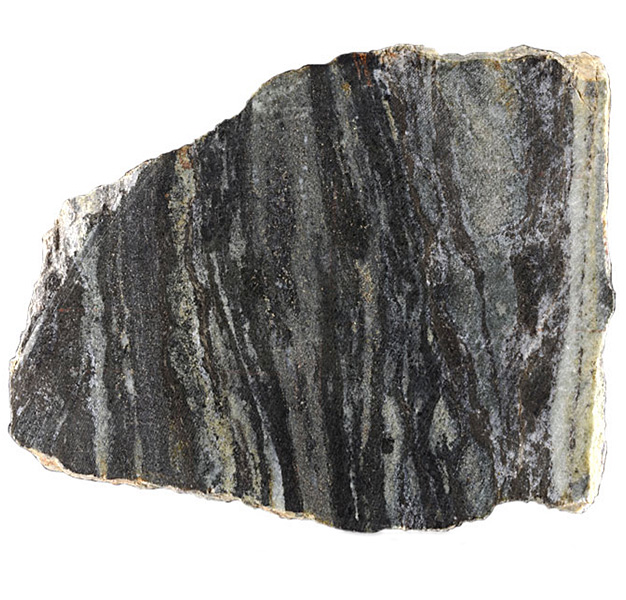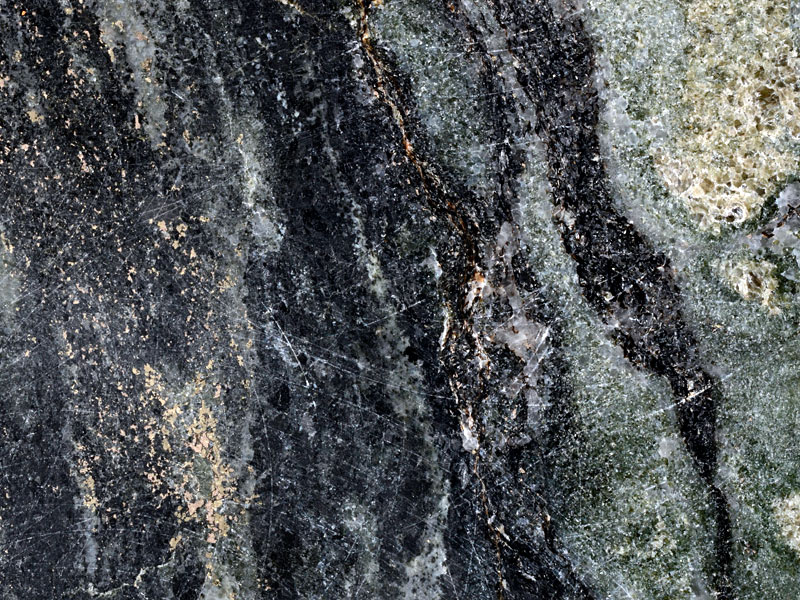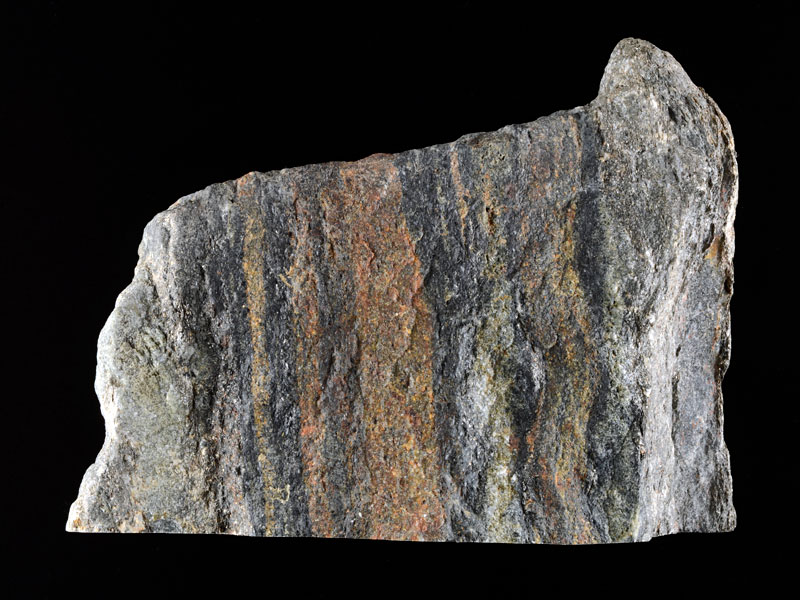
Fact sheet
This coarse-grained, calcite-rich, banded gneiss is from Sgarasta on South Harris in the Western Isles of Scotland. It was probably originally an altered volcanic rock in the Archean period. The rocks metamorphosed when subjected to high temperature and pressure during the Laxfordian orogeny, resulting in the coarse-grained rock.
The rock sample consists of bands rich in calcite, olivine (forsterite) and plagioclase. Also visible are bands rich in quartz, feldspar and amphibole. Calcite consistently shows deformation bands — often two sets of parallel bands are visible when viewed in plane polarised light and between crossed polars.
The United Kingdom Virtual Microscope (UKVM) collection consists of igneous, sedimentary and metamorphic rocks from around the UK.
It is intended as a teaching resource, helping to tell the story of the common rock types and how they form, and reflecting the history of the UK at the margins of the continent of Europe. The collection is a series of teaching sets, for example igneous rocks from the North Atlantic Igneous Province and SW England; high-temperature metamorphic rocks from Scotland and low-temperature metamorphic rocks from Wales; and sedimentary rocks, including English limestones and sandstones.







